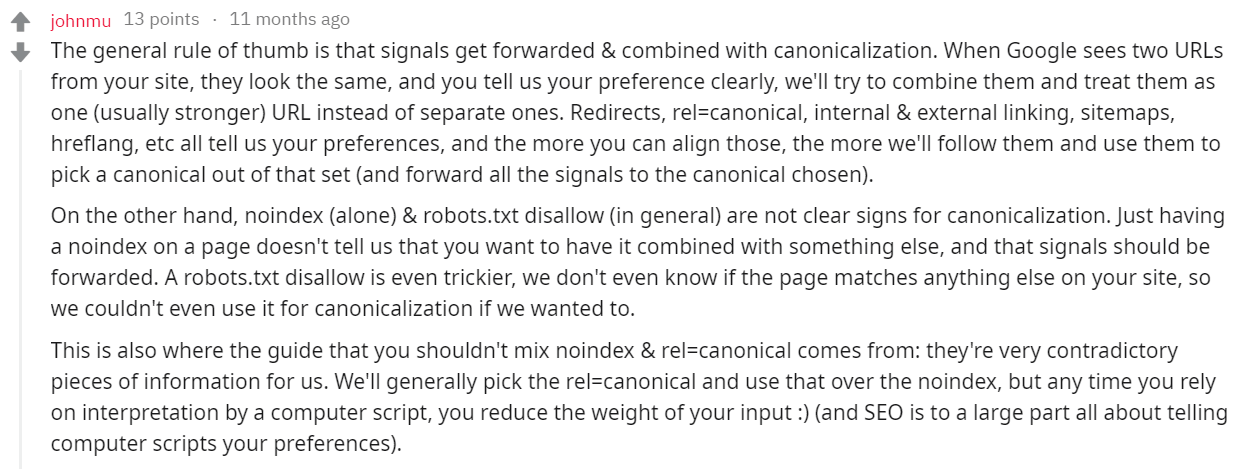Find out how to audit your brand for AI search visibility in July’s webinar with Lily Grozeva. Audit your brand for AI search visibility - Lily Grozeva. Sign up now!

This means that the URL in question is canonicalized, and also noindex,nofollow.
The point of a canonical is to explicitly and unambiguously indicate a preferred URL. If Page A is canonicalized to Page B, the instruction to search engines is 'don't index me, index Page B instead.' However, canonicals consolidate and combine indexing signals, so if Page A has a noindex on it, this noindex may also get passed through to Page B.
As such, noindex and rel=canonical should not be used together.
Google's John Mueller offers more clarity in a Reddit thread where he answered this question at length:

This Hint will trigger for any internal URL that is noindex, nofollow, and contains a canonical link element that points to another URL.
Consider the URL: https://example.com/page-a
The Hint would trigger for this URL if it had a canonical URL pointing at another internal page, and robots set to noindex nofollow:
<!doctype html>
<html lang="en">
<head>
<title>example</title>
<link rel="canonical" href="https://example.com/page-b" />
<meta name="robots" content="noindex,nofollow" />
...
</head>
<body>...</body>
</html>This is a scenario where the canonical has explicitly been set to another URL, and the robots directives only serve to confuse search engines and/or weaken the signal. The solution is simply to remove the robots directives, so that they do not interfere with the canonical.
Find, fix and communicate technical issues with easy visuals, in-depth insights, & prioritized recommendations across 300+ SEO issues.
Get all the capability of Sitebulb Desktop, accessible via your web browser. Crawl at scale without project, crawl credit, or machine limits.